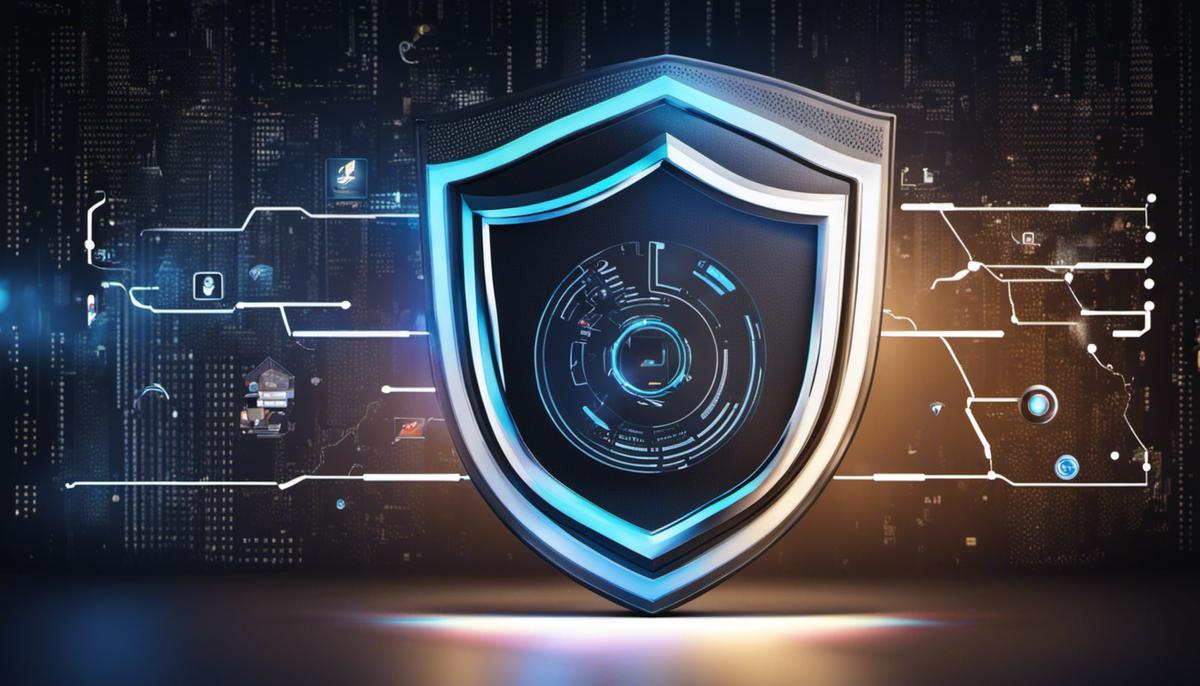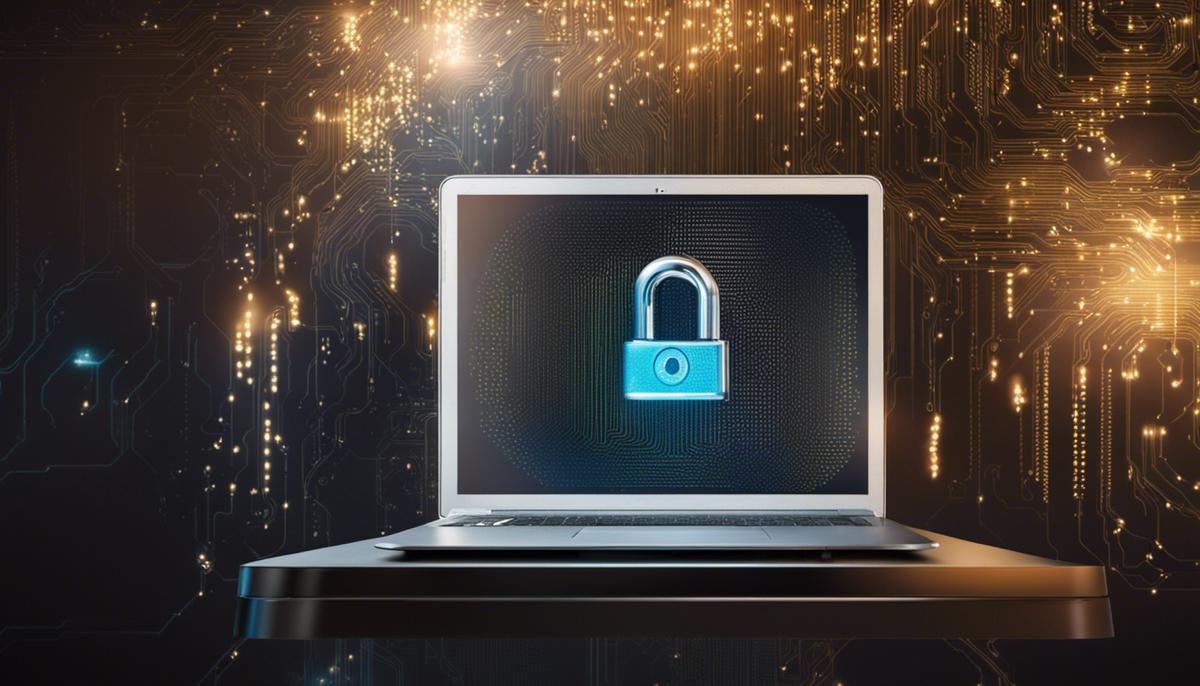In the realm of the digital universe, securing digital identities is paramount. The internet landscape continues to grow, going hand-in-glove with the surge of cyber crimes, particularly identity theft. Our individual or organizational identities transcend the physical world into the digital, and with them, the vulnerabilities to make the transition. The consequences offer a motive unlike any other to explore and comprehend the core of these digital identities and the strategies to safeguard them. With this information, this exposition delves into the fundamental reasons why securing digital identities is indispensable, how these identities function, the effective practices for securing them, and the pioneering technologies on the horizon for enhanced protection.
The Importance of Digital Identity Security
The Rising Importance of Digital Identity Security in Today’s Tech-centric Era
With the exponential rise in the world’s digital connectivity, the importance of digital identity security is escalating at an unprecedented rate. Now, more than ever, protecting one’s digital persona is of paramount importance, not just for personal security but also for maintaining the integrity of the entire digital ecosystem.
Today’s world is virtually connected. Assets and operations, both personal and corporate, are no longer confined within physical structures. There are digital wallets, smart homes, cloud storage, and extensive social media presence. Furthermore, as all-things-data continue to shift toward digitization, individuals and companies must consider the potential impacts of leaving their digital identities unprotected.
But what exactly is a digital identity? Simply put, it’s the online persona of an individual, device, or entity. It includes a collection of identifiable information perceivable in the digital realm, like usernames, passwords, security questions, and even biometric data. However, in a tech-centric world, the notion of digital identity expands to include digital footprints, transaction records, browser histories, and other online behavioral cues.
The ubiquity of technology has undeniably brought about breakthroughs on multiple fronts, from lifestyle to business operations communication to convenience. However, this newfound digital lifestyle isn’t without its hazards. With data breaches and cyber-attacks becoming more sophisticated, the stakes for securing one’s online identity have grown significantly.
Identity theft is no longer a remote concept for a select few; it’s a looming threat to anyone surfacing online. The recent surge in high-profile cyberattacks globally attests to the fact that digital personas have become a highly vulnerable target for cybercriminals. If hijacked, these identities can be manipulated to perpetrate a variety of heinous cybercrimes, from espionage, data tampering, and financial theft to creating havoc by spreading false, damaging information.
Similarly, in the corporate landscape, unsecured digital identities can cost millions, if not billions, in regulatory penalties, reputation damage, lost customer trust, and potential business disruption. Moreover, as the Internet of Things (IoT) and The Fourth Industrial Revolution gain traction, businesses are increasingly reliant on digital identities for machine-to-machine communication and smart automation. Unsecured digital identities can thus threaten both the functioning and the very existence of enterprises in some cases.
Given these factors, it’s clear that the era of digital naivety is far behind. Citizens of the tech-centric world must arm themselves with strong, security-focused habits and use advanced tools to protect their digital identities. Multi-factor authentication, cybersecurity education, password hygiene, secure communication, regular software updates, and the use of VPNs can serve as a strong starting point.
As advancements in technology continue to transform the world, digital identity security is becoming more critical. Like a resilience shield, it is fundamental to the sustained functioning of personal lives, businesses, and the collective digital economy. The future of digital avenues lies in the hands of well-guarded digital identities.

Understanding the Mechanism of Digital Identity Security
A digital identity is a comprehensive portfolio of digital footprints. It reveals the footprint maker’s patterns, behaviors, and interactions in the digital realm. Each digital identity is unique and, if left unguarded, becomes a ripe target for cyberattacks, which can lead to grave consequences for both individuals and organizations.
That said, it’s crucial to understand how a digital identity functions and what primarily makes it vulnerable to attacks. Each user interaction, whether it’s with internet browsers, mobile applications, or IoT devices, impacts the digital identity. Any personal logins or shared digital experiences enhance the digital profile. This information collection may seem innocuous on the surface and even beneficial to provide personalized online experiences. However, the danger lies in the vulnerability of this amassed data when not properly safeguarded.
Predictably, the core vulnerability of digital identities stems from poor security practices. Password recycling is a common thread among many cyberattacks. It is convenient but severely jeopardizes security, as one successful crack can unlock multiple accounts. Moreover, unprotected or weakly protected public Wi-Fi can expose personal data to sniffing attacks, making this another notable vulnerability.
Meanwhile, phishing attacks have become more sophisticated, and fewer users are able to detect these impeccable imitations, leading to the voluntary sharing of sensitive information. Also, the rise of social engineering attacks demonstrates that even the strongest password won’t shield a digital identity if tricked into bypassing security measures.
However, vulnerabilities are not restricted to human lapse. Certain software and applications may lack secure design principles, thereby inadvertently exposing data. Operating systems and other software that are not up to date also pose significant risks as they can be exploited by malware or ransomware attacks.
Hence, it becomes acutely important to inculcate strong security practices and tools to protect digital identities robustly. Utilize unique complex passwords, equip multifactor authentication, and consider biometric security. Regularly updating software and practicing good digital hygiene, like reading app permissions, can make a substantial difference in securing a digital identity.
Furthermore, government and corporate sectors should play a more dynamic role in establishing a more secure environment for digital identities. Building upon technological advancements, like biometric innovations, AI-powered security measures, and blockchain tech, may introduce more formidable safeguards for digital identities.
In the rapidly evolving digital landscape, securing our digital identities is no longer an option—it’s a necessity. As such, it is understanding how a digital identity functions and its vulnerabilities form the crucial cornerstone of reaping the benefits of a digital world, all while keeping awakening threats at bay. Be ready; the digital era waits for no one.

Securing Digital Identities: Best Practices
Advancing into the second piece of the discussion, let’s dive into the strategies that strengthen the security of digital identities. Digital identity security has moved beyond a nice-to-have feature to a priority in the digital era.
- Utilize Two-Factor Authentication: One of the most prevalent methods to enhance digital identity security is using two-factor authentication (2FA). This creates a second layer of defense against potential cyber-attacks. With 2FA, even if a cyber criminal acquires your password, they would still need your secondary authentication method to gain access.
- Leverage Biometric Verification: Biometric security measures such as fingerprint scanning or facial recognition provide an additional layer of security. This technology is becoming increasingly advanced, with voice and heartbeat recognition systems also under development.
- Employ Artificial Intelligence and Machine Learning: AI-powered risk-based authentication can analyze and learn from behavioral data, increasing security without introducing unnecessary complexities for the users. Machine learning algorithms can identify and respond to abnormalities swiftly, shutting down potential threats in real-time.
- Harness the Power of Blockchain Technology: With its decentralized architecture and tamper-resistant records, blockchain can protect digital identities from malicious activities. Blockchain technology ensures that each digital identity transaction is encrypted and remains unaltered.
- Avoid Public Wi-Fi: Public Wi-Fi networks can be a goldmine for cybercriminals. They can easily intercept any data sent over a non-encrypted connection. Stay clear of using public Wi-Fi for any transactions involving sensitive data unless you are using a VPN (Virtual Private Network).
- Guard Against Phishing Attacks: Be vigilant about not clicking on unknown links or providing information to unsolicited requests. These could be phishing attempts aimed at stealing your digital identity. Keep your operating systems and applications updated, as cyber criminals often exploit known vulnerabilities in older versions.
Wrapping up the technical glance, there’s a growing call for governments and organizations worldwide to uphold stringent strategies and create policies that protect digital identities. This collective effort also includes raising awareness campaigns, which educate internet users about the vulnerabilities and risks associated with their digital footprints.
Also, remember that security is an ongoing process and not a one-time solution. With emerging technological advancements, cybercriminals develop new strategies to undermine digital security. Continually adapting and upgrading your digital identity security measures is crucial in ensuring that your digital persona stays protected in this cyber age.
Securing a digital identity goes beyond fortifying the digital grounds; it’s about safeguarding the online representation of the individual and the corporate world. As we ride the digital wave, let us hold our guards high with these strategies, buffering our digital encounters.
The security of digital identities is no longer an option. Open your tech toolbox; it’s time to defend your digital gate.

Emerging Technology for Digital Identity Protection
Fueling the Engine: Technology Innovation and The Evolution of Digital Identity Security
In our increasingly interconnected world, innovations in technology are formulating new paradigms for the maintenance and protection of digital identities. Progressions in fields like artificial intelligence (AI), biometrics, and blockchain technology are reshaping the landscape of digital security, offering new tools to safeguard online identifications.
Two-factor authentication (2FA) is currently among the front-line defenses in digital identity security. By requiring users to provide two different verification factors from independent categories of credentials, 2FA substantially decreases the likelihood of unauthorized access or security breaches. It’s the technological equivalent of a double-lock system; it might seem tedious, but it’s a whole lot safer.
Meanwhile, biometric technology is now more than just a buzzword; it’s becoming a bedrock for secure personal authentication. Fingerprint sensors, iris scanners, and facial recognition systems constitute the forefront in this arena, providing authentication mechanisms that are inherently unique to each individual. The benefit is clear: It’s hard to hack your fingerprints.
At the cutting edge of this tech revolution is AI and machine learning, game changers in the fight against cyber threats. AI-powered systems can adapt, predict and respond to threats in real-time. What’s more, machine learning algorithms improve their response strategies with each encounter, often recognizing and neutralizing threats faster than any team of humans could.
Blockchain technology, long associated with cryptocurrencies, also has a significant role in reinforcing digital identity security. By decentralizing the storage of identity verification data and ensuring transparency in transactions, blockchain provides a robust system where hacking and identity manipulation are all but eliminated.
Cybersecurity is not just about technology but also involves disseminating knowledge about potential threats. Stay smart when using public Wi-Fi networks. Guard against phishing attacks by avoiding suspicious links and attachments. These are just as essential to maintaining a secure digital identity as any tech innovation.
Organizations and governments have a responsibility to ensure digital identity security extends beyond just software and policies. Entities must cultivate strategies around securing confidential data and running awareness campaigns to keep their workforce informed about the ever-changing landscape of digital vulnerabilities and risks.
State-of-the-art technology will inevitably continue to enhance our ability to secure and protect digital identities. However, it’s essential to remember that tech is only as impressive as its implementation. As such, continual adaptation and upgrading of security measures are mandatory to stay ahead of the game in the never-ending cat-and-mouse chase of digital security.
While technology innovation is undoubtedly driving stronger protection for digital identities, all the sophisticated tools and applications in the world won’t make a difference without conscious, informed users at the helm. After all, the best security system is a vigilant user. So, let’s adapt, stay informed, and uphold the strength and integrity of our digital identities.

Our journey through understanding digital identities has demonstrated their complex fabric and also revealed the stark realities of their vulnerabilities. However, armed with strong security practices and promising emerging technologies, we have the power not just to protect but also to fortify these digital extensions of ourselves. The securitization of our digital identities isn’t just an essential measure but a dynamic process that evolves along with the transforming digital terrain. As we continue to craft our presence in the digital universe, may it be as individuals or organizations, it’s vital to ensure that our identity is not just accurately represented but also securely ensconced.

